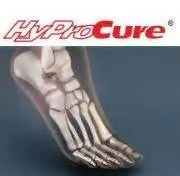Elderly and their Feet
While proper foot care is important for everybody, senior citizens have the tendency to be more susceptible to certain conditions and should therefore be well informed about problems that may arise and what they can do to properly avoid or treat them.
Some of the most common problems are foot ulcers, ingrown toenails, fallen arches, and fungal infection. A foot ulcer is an open sore on the foot and can be a result of decreased sensation in the feet. An ingrown toenail is defined as when the nail grows into the side of the toe. Fallen arches are indicated by the instep of the foot collapsing. A fungal infection is a condition that results in deformed and discolored toenails.
In order to avoid these conditions it is recommended that the feet be inspected by the patient on a regular basis. If these inspections are carried out routinely, there is a good likelihood that problems can be identified before they become severe, or can even be avoided altogether. If any abnormality is discovered, it is important that the individual consult a doctor for diagnosis and information on treatment options.
Proper foot hygiene is also important. Making sure that you always have clean, dry socks on can be a major deterrent to many different problems including bacterial infections, foot odor, and certain types of fungus. Wet feet are a major cause of many of these problems. If your socks get wet, it is important to change them. Walking around in wet socks may not only lead to various infections, but can irritate the skin and result in a number of various complications. Clean, dry feet are less likely to be affected by fungal and other infections.
As people age, the fat present on your feet begins to deteriorate. The protective nature of this fat keeps the feet healthy by providing a barrier and between your bones and the ground as well as giving the skin on the foot a certain amount of elasticity. This is one factor that causes elderly people to develop some serious foot issues. Foot moisturizers can be helpful to avoid certain problems associated with this. However, water-based moisturizers do not work as well for elderly people as they do for the young. Instead, it is more effective to use an emollient instead. An emollient is effective because it binds the water in the foot, keeping it from becoming absorbed too readily which will result in dry skin. They also have a special property called occlusion, which provides a layer of oil on the skin. This layer prevents the foot from drying up and can be very effective in treating dry skin disorders. If you can keep the skin on your feet healthy, this will substantially reduce the number of foot problems you will encounter in old age.
Proper footwear is another way to keep feet healthy. Shoes that fit well and provide proper support help prevent ingrown toenails and fallen arches.
Certain medical conditions such as diabetes or poor blood circulation increase the risk for foot issues. For individuals with any of these conditions it is extremely important to conduct regular foot inspections to make sure that there are no sores or infections present.
Toenail Fungus
Toenail fungus is a frustrating and embarrassing problem for many people. It can be persistent and hard to get rid of. Thankfully, there are a number of options for treatment available.
The most effective treatment for toenail fungus is Lamisil. However, any anti-fungal treatment sold to get rid of athlete's foot can also be used. In the ingredients list on products sold to kill fungal growth on the body, look for the ingredient terbinafine. Terbinafine is a chemical product that kills fungal growths. Using a product with terbinafine in it will essentially damage the cell membrane of the fungus organism. However, don't expect immediate results. You will need to apply the medication regularly, and make sure to keep washing the affected area and drying it thoroughly. The fungus needs moisture, air and your skin to live.
Taking other precautions can also help with fungus. Use a powder such as talcum powder in the shoes to absorb sweat and moisture. It is also important to wear sandals or loose-fitting, open-toed shoes which will improve air-flow around the feet, keeping the feet dry. These kinds of shoes will also expose your feet to light, which is not favorable to fungus growth. Wearing socks that wick moisture and dry quickly will also help control fungus.
Although Lamisil and other medications containing terbinafine have been proven effective, they also cause a number of side effects which may be undesirable. If you decide that this kind of medication is not for you, there are a number of natural remedies to try. Applying alcohol, tea tree oil, hydrogen peroxide, or Vicks VapoRub to the nail regularly may solve the problem.
Your podiatrist might also recommend soaking your toenails in a gentle bleach solution. Anecdotal evidence suggests that vinegar and Listerine may also be effective when used as a soaking solution. These are simple treatments, but ones that require patience and consistency. There are also topical products available from your pharmacy which is manufactured especially for toenail fungus.
There are more immediate treatments for toenail fungus available using laser surgery. If you are looking for an immediate and quick removal of the toenail fungus, you will need to find a laser surgeon who can cut the growth out of your toenail. Don't try to cut the toenail fungus out using toenail scissors or other kinds of scissors. Once you get rid of your fungus infection, you will need to throw out your old shoes to avoid reinfection.
Foot Therapy for Sports Injuries
Whether out on the field or on the courts, in practice or in game, athletes put their bodies through great strain. There are some sports that are more demanding and taxing on the body than others, but the fact is that every sport has an element of unnatural motion or inorganic movement. Take baseball for example. A pitcher winds up and flings their body with incredible amounts of torque in order to get the most possible velocity out of their pitches. This motion is incredibly taxing on the body and can cause serious damage to people.
No matter the injury, the best way to expedite a convalescence period is to receive physical therapy. Physical therapy is an empirically founded practice that has been proven to work for millions of people. Physical therapists have gone through years of schooling specifically so that that they are able to help people return to form from any injury.
During physical therapy for foot injuries, you will go through regimented training in order to get back to form. Sometimes the training can be very difficult, especially in the beginning when the foot feels awkward, almost like you may have forgotten how to use it. At first you will do basic stretching and twisting exercises in order to get the foot mobility and flexibility back up. The therapist will also massage the injured area in order to activate the muscles as well as to relax them. Over time, however, you will eventually move up to strengthening exercises. These exercises will be designed specifically so that activation of the injured area is ensured. These exercises are extremely important so that the foot regains its strength and mobility.
Foot therapy for sports is a miracle in modern science. Although devoid of fancy chemicals and terminology, therapy is an evidence based practice that is just as intelligent and well designed as any other. Because of huge advancements with regards to knowledge surrounding how muscles and joints work, physical therapists are able to turn catastrophic injuries around so that athletes can get back on their feet again.
Flat Feet
Flat feet is a foot condition in which the arch of the foot either drops or is never developed. About 20-30% of the population generally has flat feet because their arch never formed during growth. While it is common in babies and small children, it can become a problem if the arch never develops. For adults, the development of flat feet can be brought upon by injury, or may even be a result of pregnancy due to the increased elasticity; however, in adults the flat footedness is usually permanent.
Having flat feet can sometimes make it difficult to walk due to the stress it places on the ankles. The general alignment of your legs is thrown off because the ankles move more inward which can cause some major discomfort. This also has a big effect on the knees as many people that have flat feet often have arthritis in that area. However, in many cases, flat feet does not cause any pain and it should not be a cause for concern in that case.
For those that run, there are specific shoes to help realign the ankles with a lot more support and less pronation. The weight shifting in this activity is very quick, so that's why it's important to know if you have flat feet early on in your life, in case of injury down the road.
The wet footprint test can be an indicator to diagnosing flat feet. In this test, the individual would place a flat foot on a surface in order to show a footprint. If there is no indentation or indication of an arch, that person may have flat feet. In all cases, it is best to consult a podiatrist if flat feet is suspected or noticed.
Once flat feet has been diagnosed, it can be treated by walking barefoot in beach-like terrain, or wearing insoles. There are two types of flat feet; one being rigid, where the feet appear to have no arch even when the person is not standing, and the other being flexible where the person appears to have an arch while not standing, but once standing the arch goes away. In the case of flexible flat feet, unless there is pain caused by the condition, there is no need for treatment. However, if it causes pain or in the case of rigid flat feet, exercises and orthotic insoles may be prescribed in order to help the arches develop.
In some cases when the condition is severe and all other methods have been exhausted surgery may be required but this is normally avoided due to a lengthy recovery time and high cost.
Sesamoiditis
Sesamoiditis is a condition that affects the joint that is just behind the big toe in the area known as the ball of the foot. It is most common in younger people and people who have just begun an exercise program. Since the sesamoid bones are like a pulley controlling the big toe, they can rub against each other and cause a gradual onset of pain. Pain may also be caused by the inflammation of tendons surrounding the bones. If ignored, sesamoiditis can lead to other, more serious problems such as severe irritation and fractures of the bones.
The cause of sesamoiditis is sudden increase in activity. The ball of your foot acts as a springboard to help you lift off when you are jogging or running. Sudden increase in the use of these bones or the tendon that controls them can cause irritation. The tendon then begins to develop inflammation and the joint begins to swell. People with smaller, bonier feet or those with a high arch are typically more susceptible to this condition.
Sesamoiditis is fairly simple to diagnose since the symptoms have a gradual onset rather than a sudden impact. The symptoms begin with slight irritation around the joint shortly after the increase in activity. The discomfort eventually turns to pain with light swelling and possibly redness. Although redness or bruising are rare, this may be a symptom. After each session of exercising, the aggravated joint becomes more irritated and increases into a very intense throbbing.
Treatment for sesamoiditis can vary depending on the severity of the situation. However, treatment is almost always approached in a noninvasive way. For a case that is just beginning the doctor may recommend a very strict rest period that will limit the activity allowed on the joint. If you must be active, a recommendation for as modified shoe or insole, along with bandaging and immobilizing the big toe will be made to ensure that pressure is not placed on the joint. For severe cases, it is typically recommended that the joint and the big toe be completely immobilized to allow adequate time to heal. Ice and an over the counter anti-inflammatory may can help with the pain and discomfort while you are at rest.
When you return to your regular exercise activities, it is recommended that you use an insole that will allow even distribution of impact to your entire foot, rather than just the balls of your foot. This will prevent further aggravation of the injury.
Causes, Symptoms, and Treatment of Poor Blood Circulation in the Feet
Poor blood circulation in the feet and legs is often caused by peripheral artery disease (PAD), which is usually the result of a build up of plaque in the arteries. Plaque build up, or atherosclerosis, can be the result of excess calcium and cholesterol in the bloodstream, which restricts how much blood can flow through arteries. Reduced blood flow to a certain area of the body severely limits the amount of oxygen and nutrients that part of the body receives, causing degeneration in the muscles and other tissues. Sometimes, poor blood circulation in the feet and legs can be caused by other conditions, such as damage to or inflammation of blood vessels, known as vasculitis.
Poor blood circulation in the feet and legs is more common in those who are overweight or obese, have diabetes, high blood pressure, high cholesterol, who smoke, or who have a family history of PAD or related conditions (heart attack, stroke, etc.). Diabetes and smoking place a person at greatest risk for developing poor blood circulation, although advanced age (over 50) can also increase risk.
If you are experiencing poor blood circulation in the feet and legs caused by PAD, it is important to make changes to your lifestyle in order to reduce your risk of experiencing a heart attack or stroke caused by this condition. If you smoke, quit completely -- this will increase the amount of oxygen in your bloodstream. Exercising and reducing the saturated fats in your diet (which come from fatty meats, fried foods, whole milk, etc.) can make a difference in improving blood circulation in feet. It is also important to avoid developing influenza and to carefully control your blood sugar if you have diabetes.
Your doctor may recommend combining lifestyle changes with a prescription medication regimen to improve blood circulation. The most commonly-used medications for PAD are called statins and work by blocking the amount of enzymes in your body that produce cholesterol. They are known by the brand names Zocor, Lipitor, Crestor, and others.
2013
March - April - May - June - July - August - September - October - November - December













